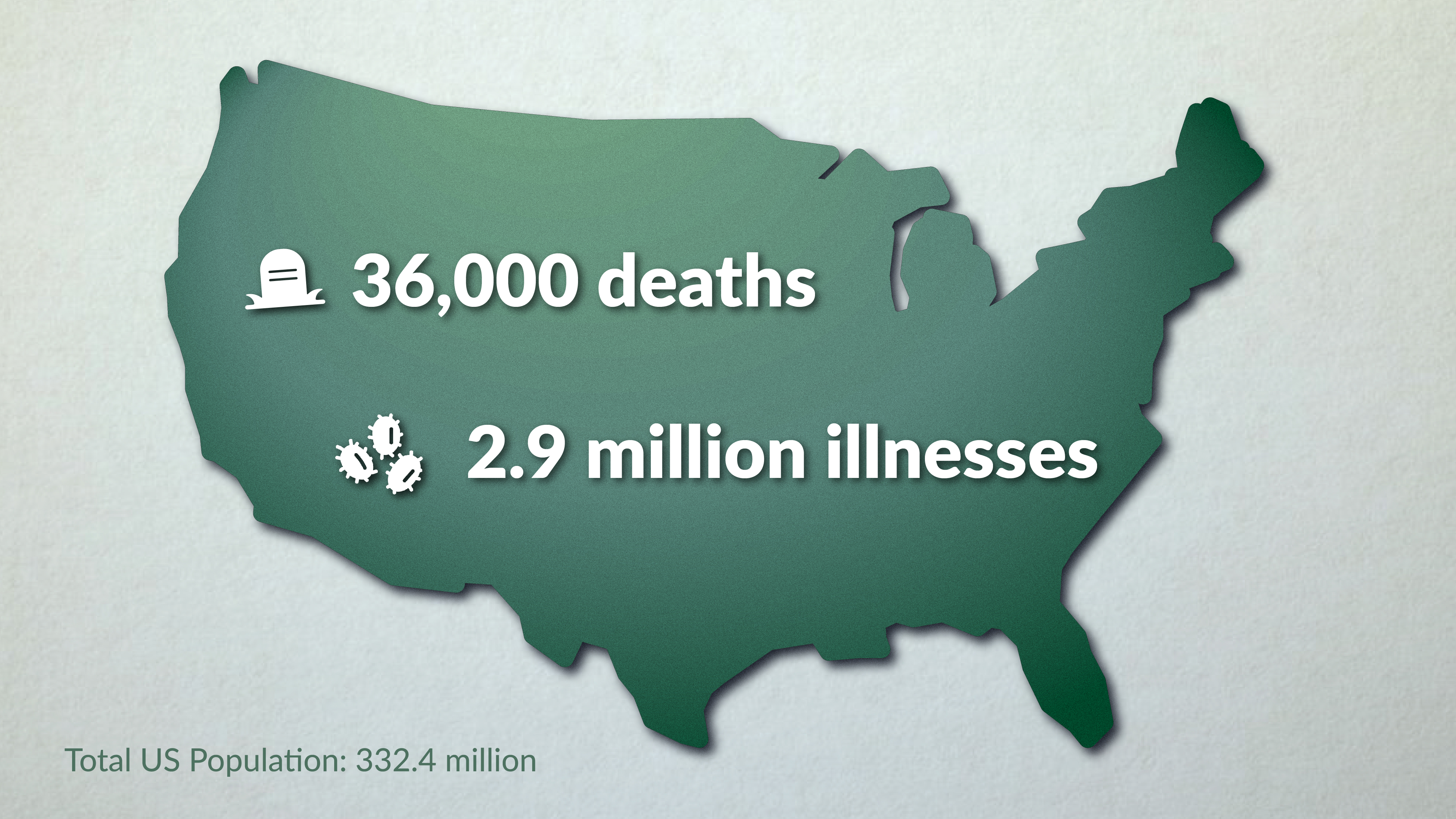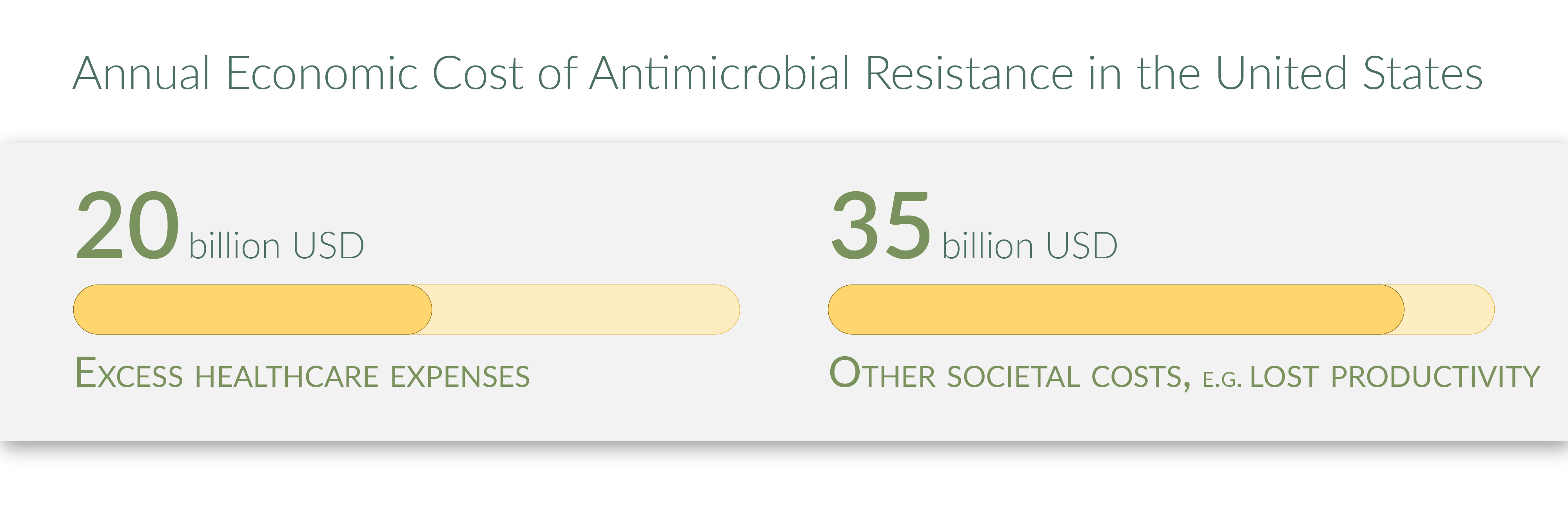Review the Lesson 2 Introduction
Imagine a world in which effective antimicrobial drugs are a thing of the past because of widespread resistance. Minor injuries may be fatal due to uncontrolled infections, routine surgeries cannot be performed without high risk, and common illnesses, once readily treatable, are potentially incurable. As the World Health Organization (WHO) wrote in their 2014 Antimicrobial Resistance Global Report on Surveillance, antimicrobial resistance is “a problem so serious that it threatens the achievements of modern medicine.”
To help you use your knowledge from Lesson 1, please watch the video Defending Our Future: Protecting Humans & Animals from Antibiotic Resistance by the Centers for Disease Control and Prevention (CDC).
Defending Our Future: Protecting Humans & Animals from Antibiotic Resistance by the Centers for Disease Control and Prevention (CDC)
Link to video: https://youtu.be/5VNIL3gbqfI
 According
to the 2019 report from the CDC, Antibiotic
Resistance Threats in the United States, approximately 2.9 million illnesses and 36,000 deaths occur annually in the United States from bacterial or fungal infections that are resistant to one or more antimicrobial
agents. Morbidity and mortality data only capture part of the problem. Infections caused by resistant bacteria are associated with a higher frequency of treatment failures, increased risk of hospitalization, longer lengths of stay in hospitals and intensive care units (ICUs), and increased
mortality, relative to infections caused by pan-susceptible strains.
According
to the 2019 report from the CDC, Antibiotic
Resistance Threats in the United States, approximately 2.9 million illnesses and 36,000 deaths occur annually in the United States from bacterial or fungal infections that are resistant to one or more antimicrobial
agents. Morbidity and mortality data only capture part of the problem. Infections caused by resistant bacteria are associated with a higher frequency of treatment failures, increased risk of hospitalization, longer lengths of stay in hospitals and intensive care units (ICUs), and increased
mortality, relative to infections caused by pan-susceptible strains.
 On
top of that, the annual economic cost of antimicrobial resistance in the United States has been estimated to be as high as $20 billion in excess healthcare
expenses and $35 billion in other societal costs, including lost productivity. If we do not take significant steps to mitigate this crisis, these figures will only worsen.
On
top of that, the annual economic cost of antimicrobial resistance in the United States has been estimated to be as high as $20 billion in excess healthcare
expenses and $35 billion in other societal costs, including lost productivity. If we do not take significant steps to mitigate this crisis, these figures will only worsen.
To help you visualize the role of veterinarians in addressing this public health threat, take a look at this video.
